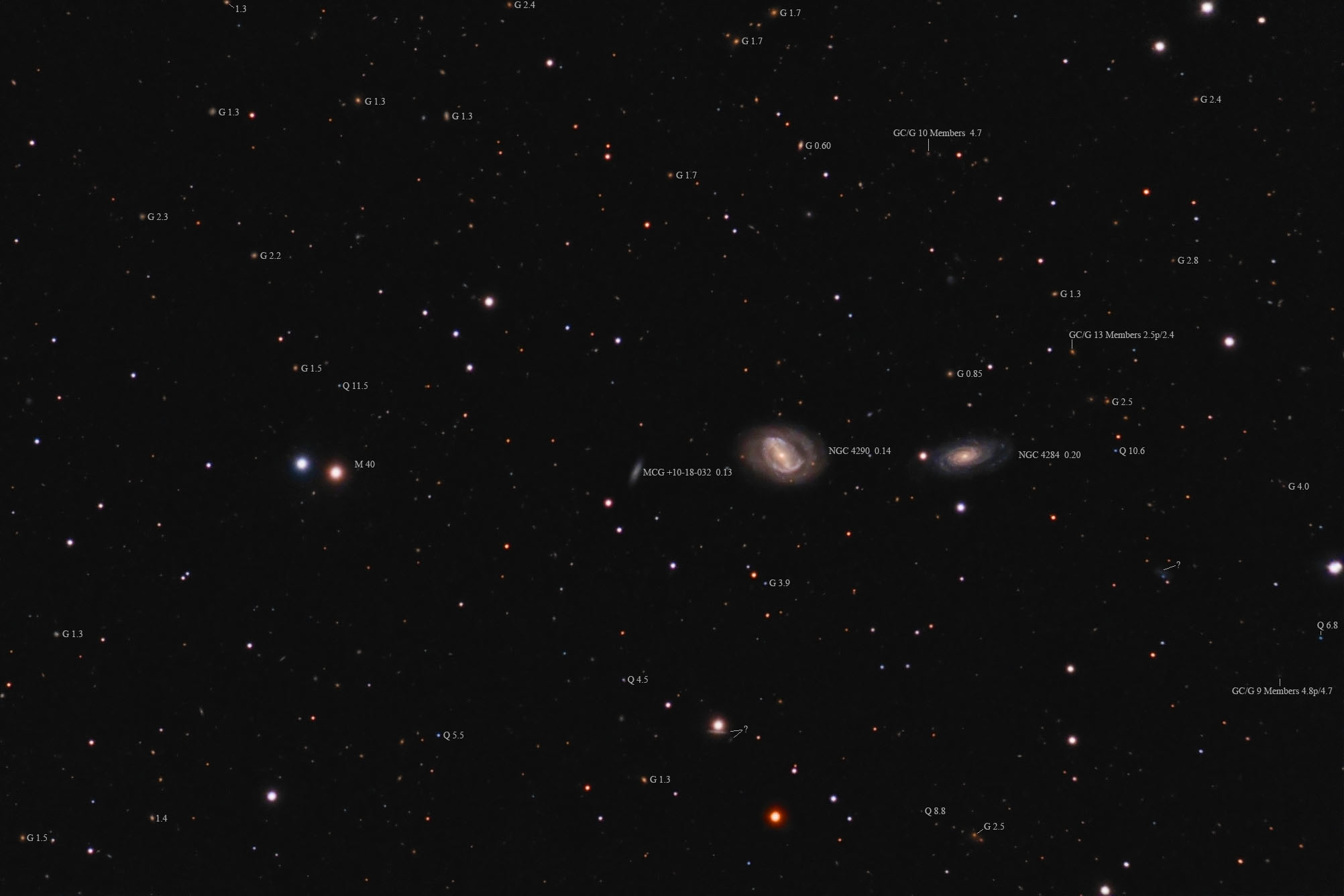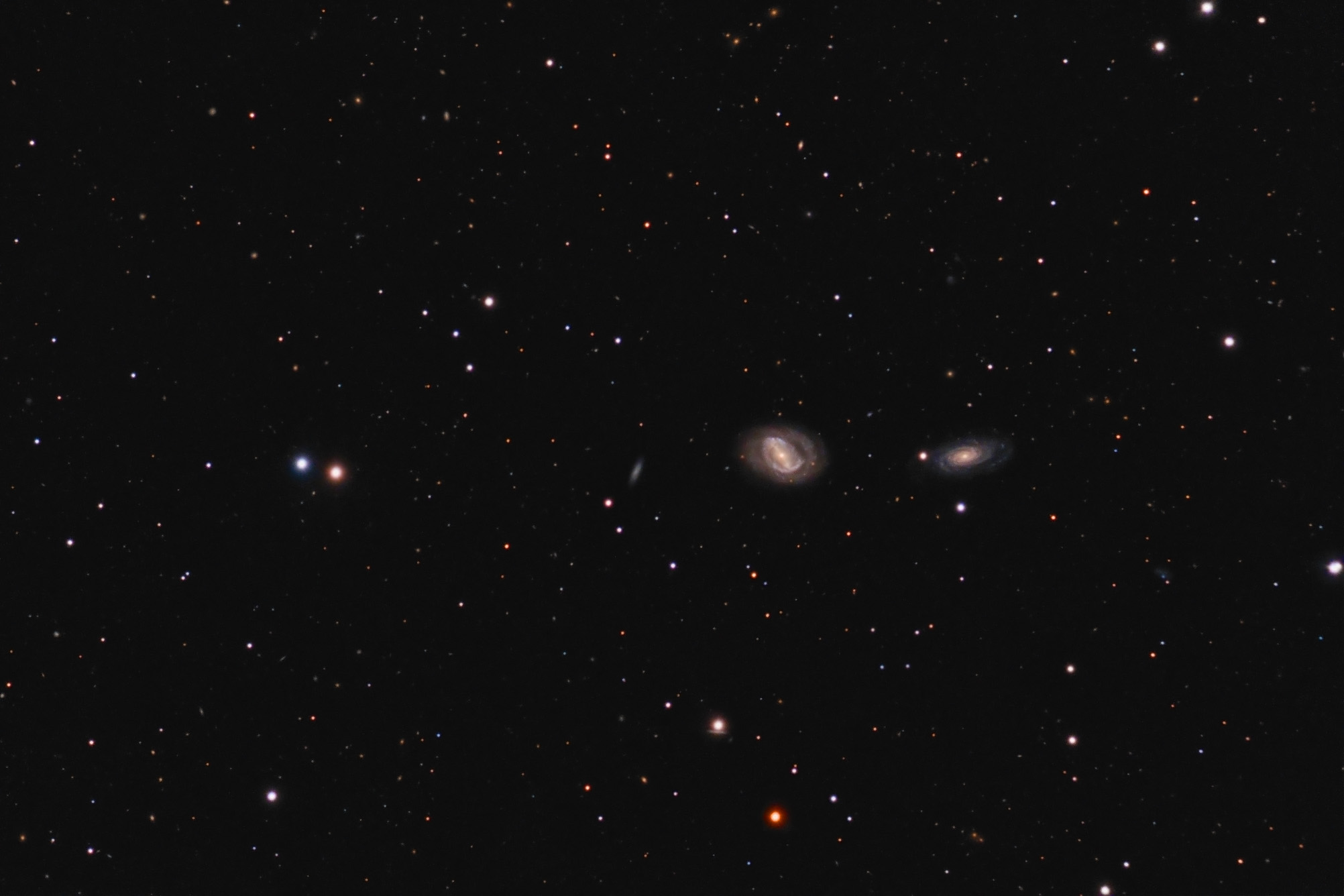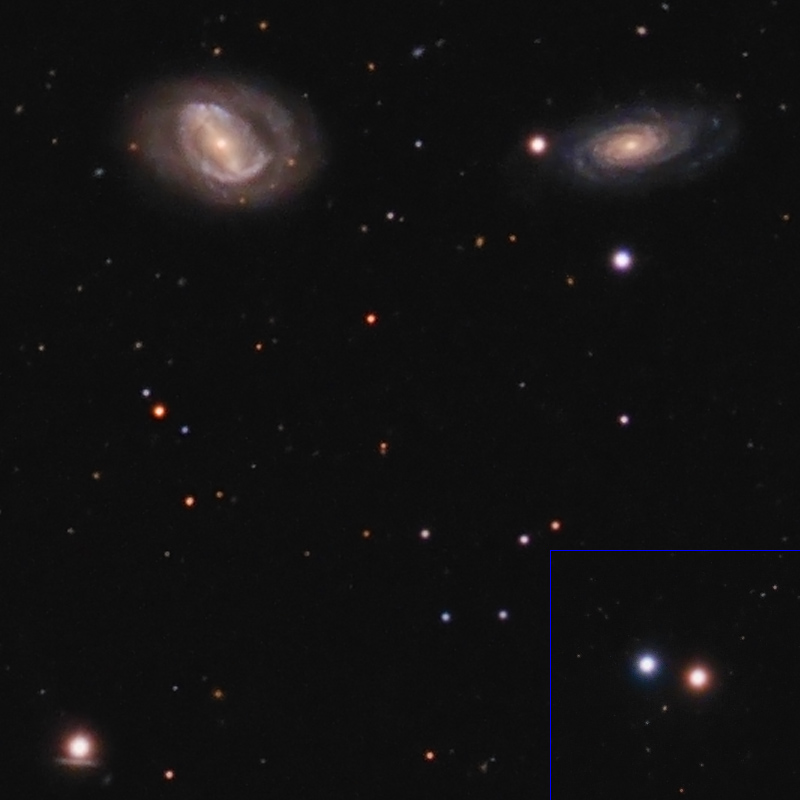| Description | Images |
Object name: M040Designation(s): M040, NGC4284, NGC4290, M40 is simply the double star Winnecke 4. The separation has been steadily increasing since Winnecke first measured it at 49.2" in 1863 at a position angle of 88 degrees. Hipparcos in 1991 said 52.8" at 77 degrees. Intermediate measurements show the pair to be separating on a straight line so they are a line of sight pair. There seems to be some discrepancy about their spectral color. Lick Observatory's catalog shows them as G0 and F8 while Brian Skiff says K0III and G0V. Unfortunately, my color data is severely distorted by clouds, especially during the red frames. I tried on a second night for new red data only to have clouds again create a problem. Thus I'm not sure about my colors. I did push them too but I seem to see a late G and early F. Looking at other photos online I see the few color ones showing white and slightly blue though the Sloan Survey image would appear to agree to Brian Skiff's K and G classification. I'm likely too blue with the hotter star. Related Designation(s):2MASS J12201261+5805346, 2MASS J12204755+5805327, 2MASX J12201263+5805347, 2MASX J12204750+5805325, 2MASXi J1220126+580534, 2MASXi J1220480+580533, AKARI J1220472+580531, ASK 298673.0, CGCG 1217.8+5822, CGCG 1218.4+5822, CGCG 293-011, CGCG 293-012, GALEXASC J122012.39+580535.0 , GALEXASC J122047.47+580533.8 , HDCE 0714 NED001, HOLM 373A, HOLM 373B, IRAS 12183+5822, IRAS F12177+5822, IRAS F12184+5822, KPG 329A, KPG 329B, LDCE 0888 NED002, LDCE 0891 NED001, M040, MAPS-NGP O_096_0552013, MCG +10-18-026, MCG +10-18-029, MESSIER 040, NGC 4284, NGC 4290, NGC4284, NGC4290, NSA 141169, NSA 161533, NVSS J122047+580534, PGC 039775, PGC 039859, SDSS J122012.61+580534.6, SDSS J122012.62+580534.3, SDSS J122047.51+580533.0, SDSS J122047.51+580533.3, SDSS J122047.52+580533.0, SDSS J122047.53+580533.0, SDSS J122047.53+580533.3, SSTSL2 J122047.61+580533.0, UGC 07393, UGC 07402, UNAM-KIAS 0910, UZC J122012.6+580535, UZC J122047.5+580534, [PJY2015] 587735696980705286 , [TTL2012] 038379, | Permanent link: https://images.mantrapskies.com/catalog/MESSIER/M040-NGC4284-NGC4290/M40L4X10RGB2X10-ID.JPG |


